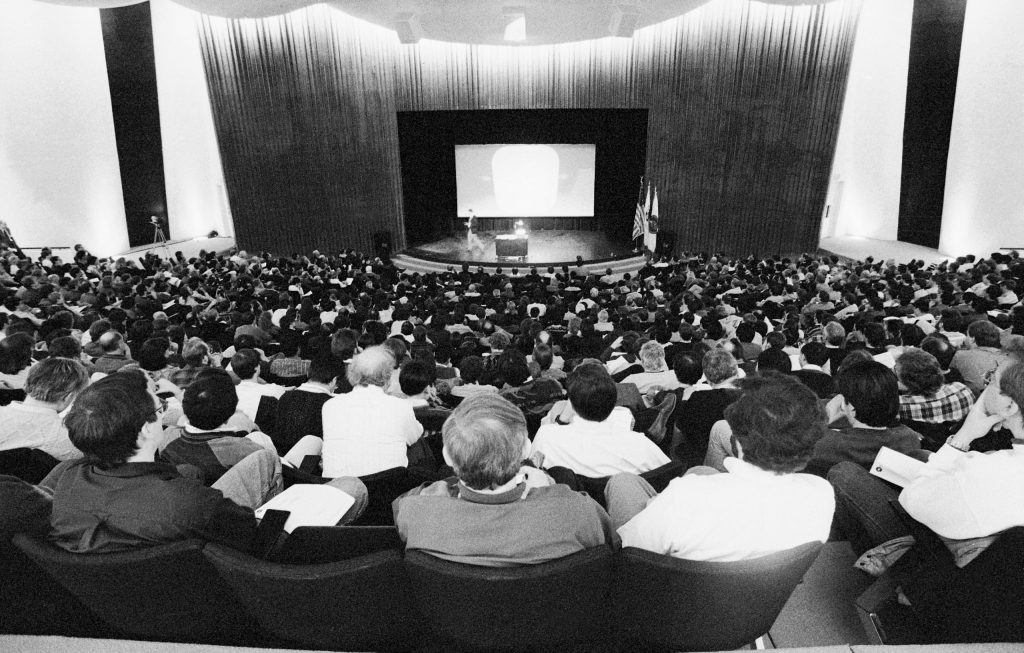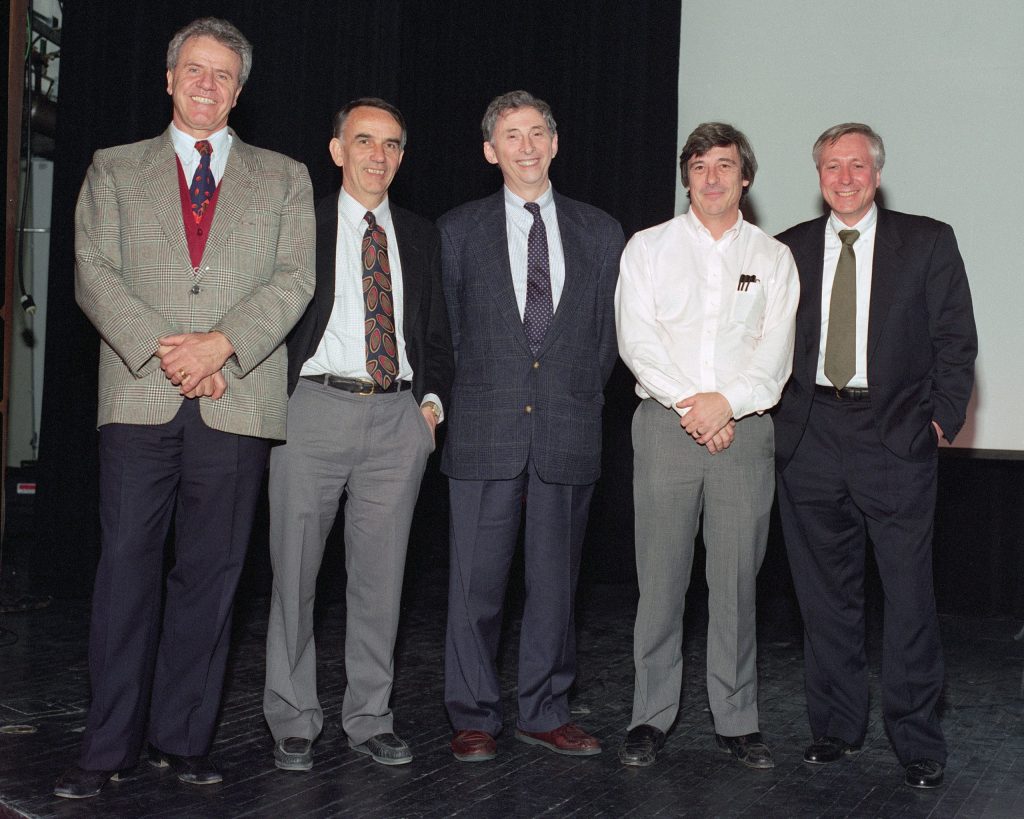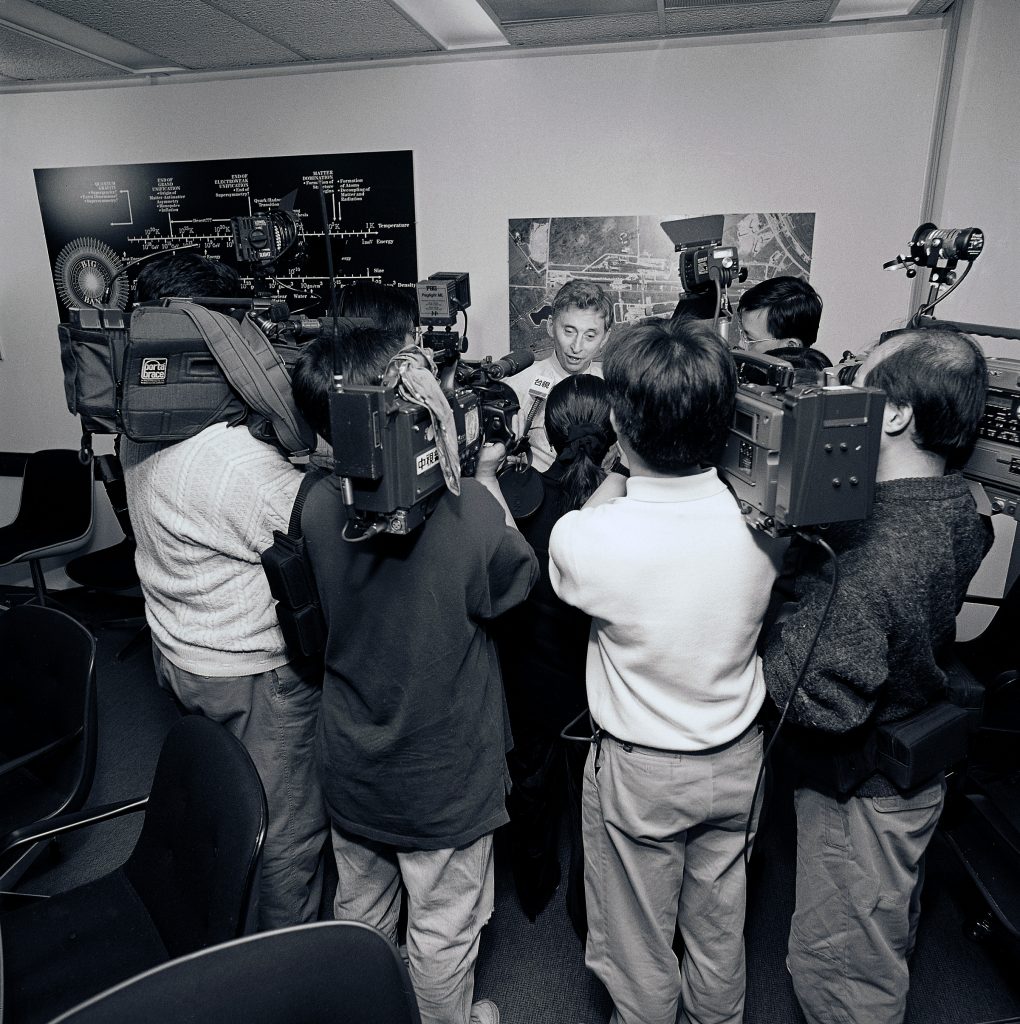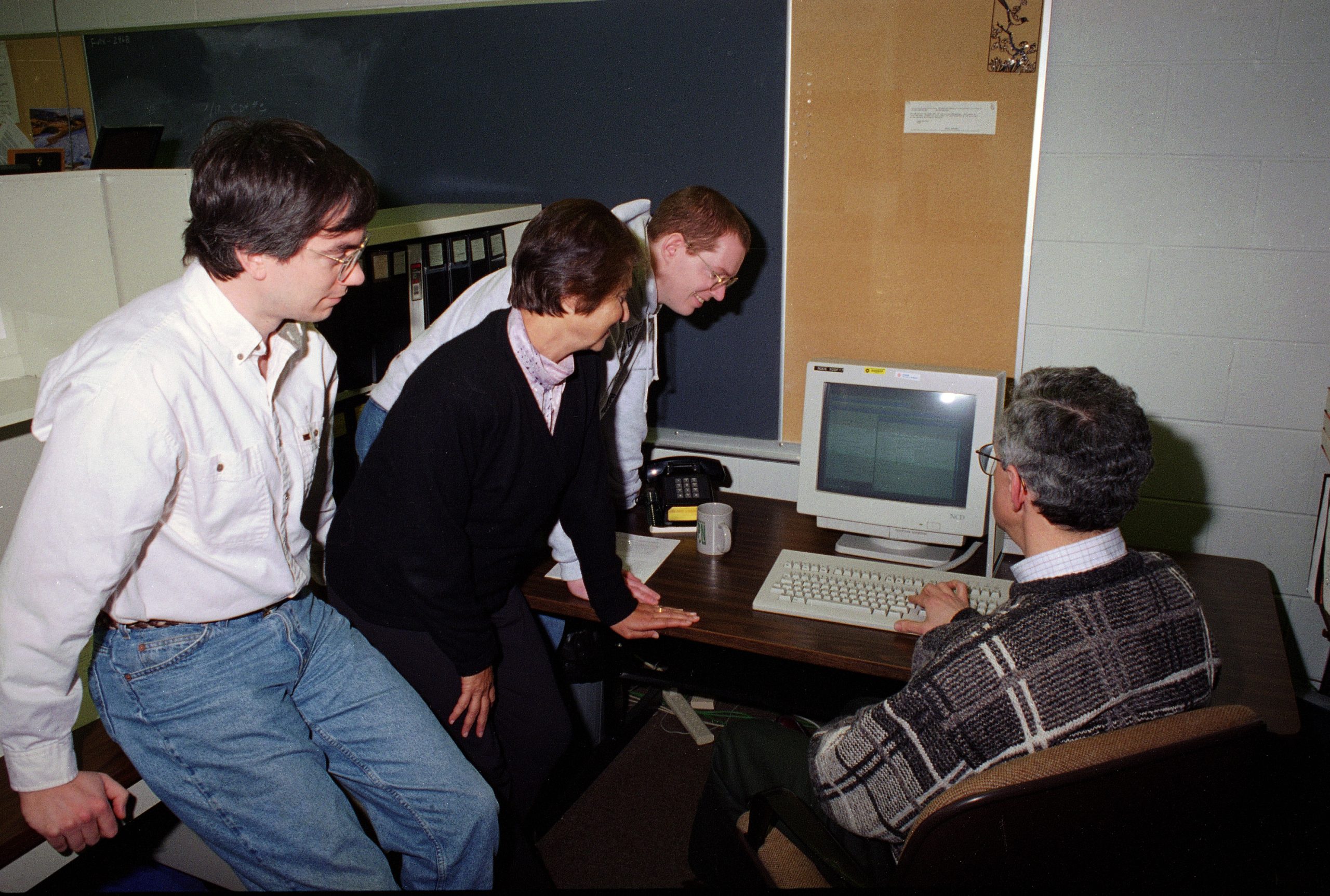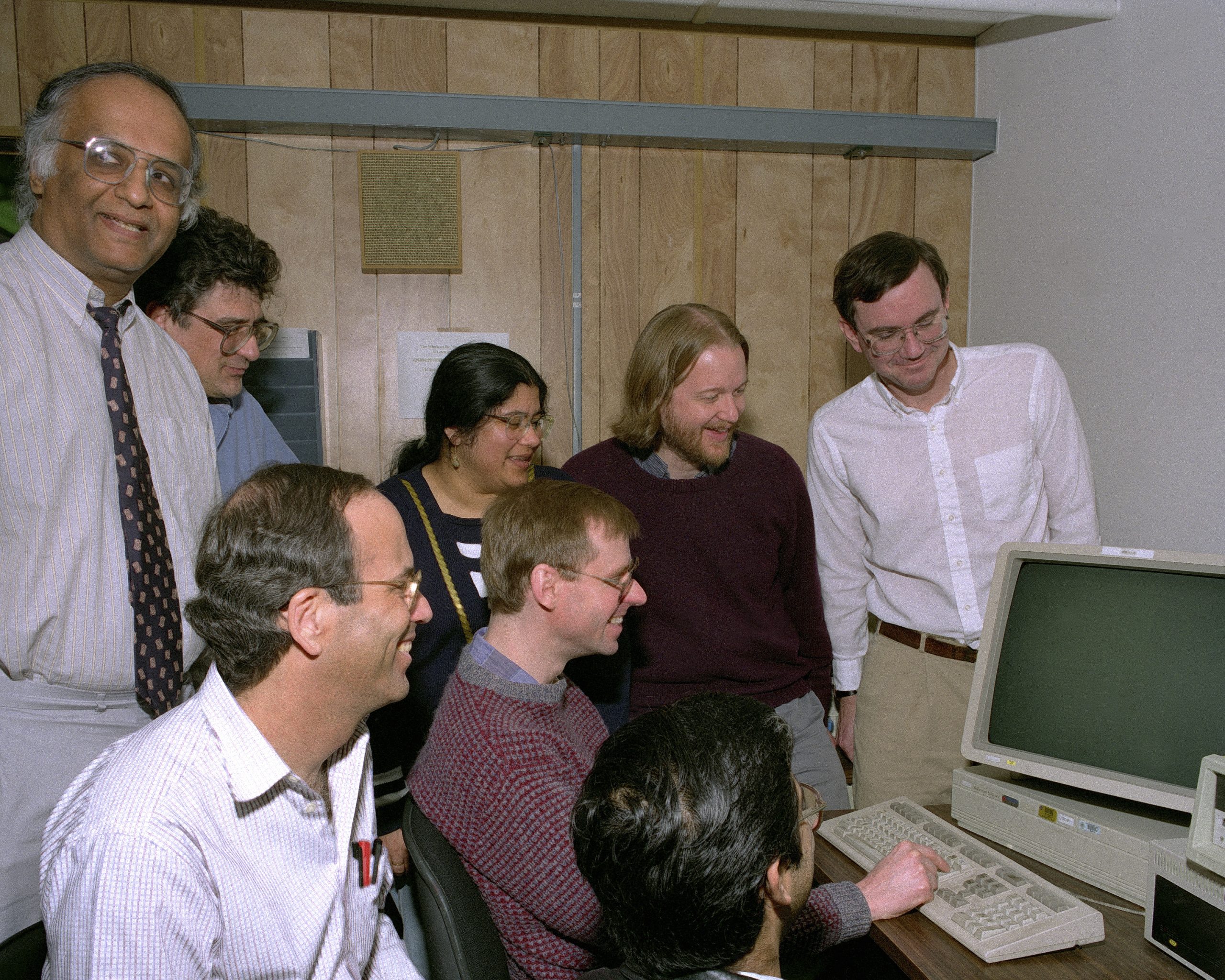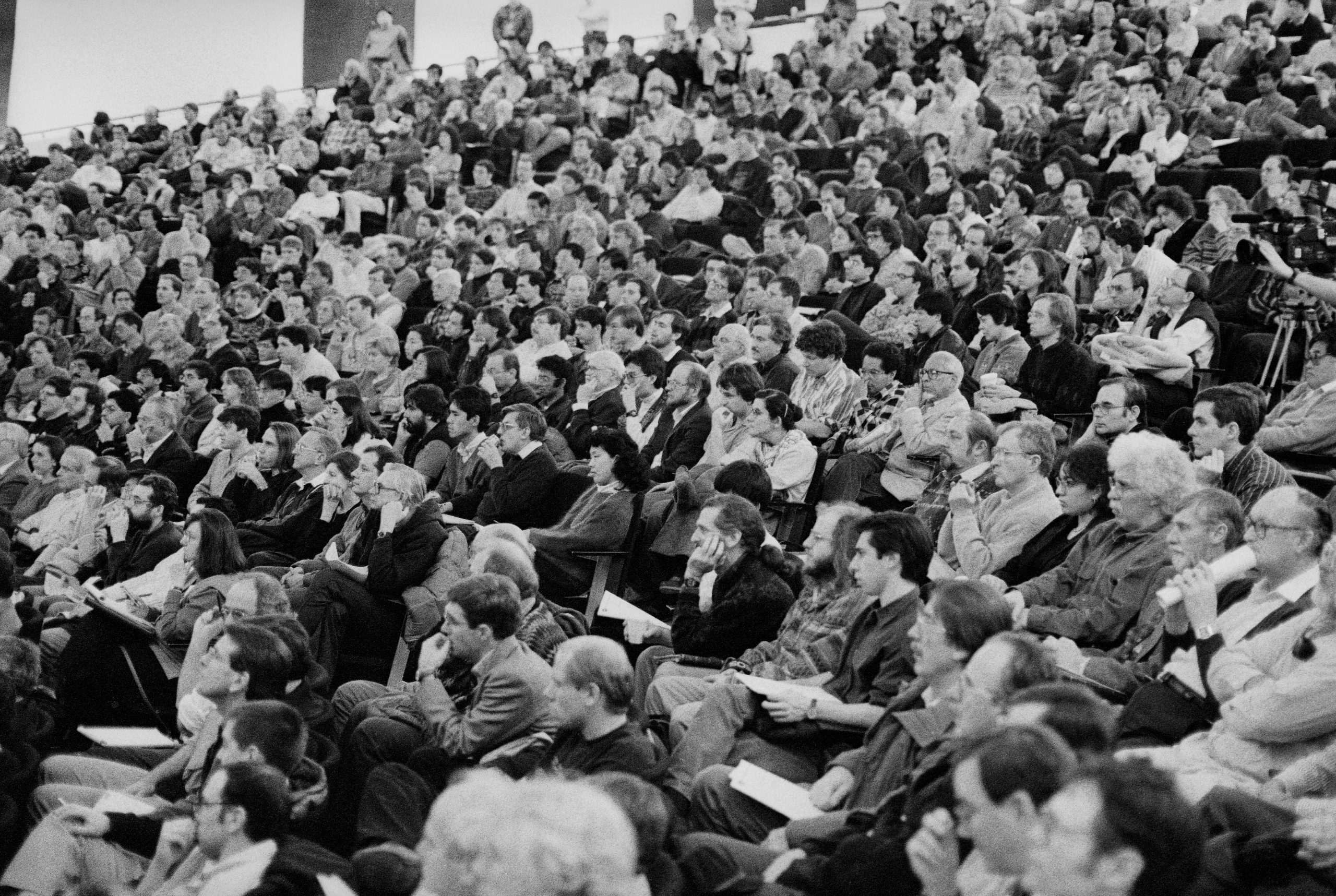Newswise — On March 2, 1995, laboratory staff, users and media gathered at the U.S. Department of Energy’s Fermi National Accelerator Laboratory in the lab’s Ramsey Auditorium to hear about one of the most significant discoveries in science.
After physicists at Fermilab discovered the bottom quark in 1977, the first in a new generation of elementary particles, scientists around the world began searching for evidence of its expected partner, the top quark. The top quark was the last fundamental particle of matter within the six-member family of quarks predicted by the Standard Model, one that physicists had not yet tracked down. Its discovery would provide strong evidence for the accuracy of the Standard Model. The task, however, would not be easy: It took almost two decades of effort by hundreds of scientists from around the world who pushed the boundaries of technology in their search for this elusive particle.
People pack Fermilab’s Ramsey Auditorium on March 2, 1995, during the announcement of the discovery of the top quark. Photo: Reidar Hahn, Fermilab
The top quark, as it turned out, is by far the most massive of the elementary particles of the Standard Model — it is 40 times more massive than the bottom quark, the second heaviest of the quarks. It is as massive as an entire gold atom and 50% heavier than a Higgs boson. Fermilab’s original accelerator complex, which culminated in the Main Ring, could not provide sufficient energy to produce the top quark. Top quarks are thought to have existed only for a few brief moments right after the Big Bang: bringing them back into existence would require the lab’s scientists and users to replicate the intense energies of the early universe.
Before the hunt for the top quark could begin, Fermilab had to build the Tevatron, the world’s first superconducting accelerator and for more than 20 years the world’s most powerful particle collider. The hunt for the top quark also required the construction of two large sophisticated particle detectors, known as CDF and DZero, and the combined efforts of two scientific collaborations. The CDF and DZero collaborations would each comprise about 450 people in 1995. Unlike the construction of the accelerator, these detectors were international projects; partners in Italy and Japan played major roles in CDF, while Russia, France, India and Brazil provided key support to DZero. The scientific collaborations included institutions from Brazil, Canada, Colombia, France, India, Italy, Japan, Korea, Mexico, Poland, Russia, Taiwan and the United States.
The Fermilab director joins CDF and DZero spokespeople at the announcement of the top quark discovery. From left: CDF spokesperson Giorgio Bellettini, DZero spokesperson Paul Grannis, Fermilab Director John Peoples, DZero spokesperson Hugh Montgomery, CDF spokesperson Bill Carithers Photo: Reidar Hahn, Fermilab
An article in a July 1992 issue of FermiNews outlines the goals of the experimenters: “This spring, physicists at CDF and D0 began their search for the most elusive of all subatomic particles, the top quark. The top quark is the last, and most important quark that researchers have yet to discover in the Standard Model. Its discovery will not only validate the Standard Model, but also give physicists at Fermilab a closer look at the conditions that existed at the beginning of the universe.”
Fermilab Director John Peoples addresses the press during a March 2, 1995, press meeting on the top quark discovery. Photo: Reidar Hahn, Fermilab
During the next few years, CDF and DZero experimenters recorded and analyzed the products of collisions between protons and antiprotons at the Tevatron. Since top quarks were too short-lived for the experimenters to observe directly, they used their sensitive detectors to look for decay products from the top quark. At the Tevatron, collisions produced a pair of top and antitop quarks. Each decayed immediately into a b quark and a W boson. In the various decay channels of these final-state particles, the top quark signatures appeared as combinations of electrons, muons and jets of particles. The discovery of the top quark would not be a single “Eureka!” moment. Instead, scientists would arrive at their discovery after thorough study and accurate analyses of the particle combinations, separating them from the huge backgrounds that arose from millions of collisions.
CDF experimenters submit their top quark discovery paper to Physical Review Letters on Feb. 24, 1995. Photo: Lynn Johnson, Fermilab
DZero experimenters submit their top quark discovery paper to Physical Review Letters on Feb. 24, 1995. Photo: Fred Ullrich, Fermilab
On Feb. 24, 1995, CDF and DZero simultaneously submitted papers to Physical Review Letters, describing their definitive observations of the top quark: “Observation of Top Quark Production in pp Collisions with the Collider Detector at Fermilab” and “Observation of the Top Quark,” respectively.
The experimenters made the public announcement of their discovery at a press conference on March 2, 1995. Under the leadership of Fermilab director John Peoples, CDF’s co-spokespersons Giorgio Bellettini and William Carithers Jr. and DZero co-spokespersons Paul Grannis and Hugh Montgomery represented their collaborations. The papers were published in the April 3, 1995, issue of PRL.
Recently in July 2019, the European Physical Society formally presented the CDF and DZero collaborations with the 2019 High Energy and Particle Physics Prize “for the discovery of the top quark and the detailed measurement of its properties.”
The discovery brought Fermilab international attention; newspapers from all over the world, from New York to California, from Brazil to Germany to Japan, covered this historic achievement. Within the particle physics community, the discovery would lay the groundwork for new explorations into the nature of matter and the universe for decades to come.
Major support for construction of the Tevatron and the CDF and DZero experiments was provided by DOE’s Office of Science.
Valerie Higgins is the Fermilab archivist.
Fermilab is supported by the Office of Science of the U.S. Department of Energy. The Office of Science is the single largest supporter of basic research in the physical sciences in the United States and is working to address some of the most pressing challenges of our time. For more information, please visit energy.gov/science.
Hundreds gather in Fermilab’s Ramsey Auditorium to hear the announcement of the top quark discovery. Photo: Reidar Hahn, Fermilab

